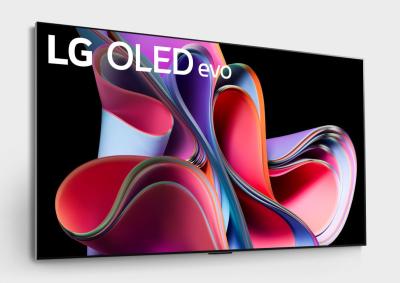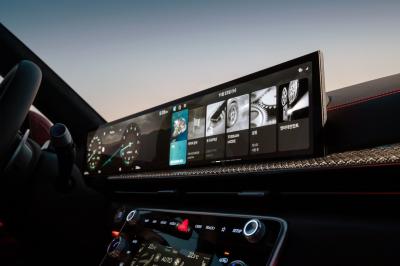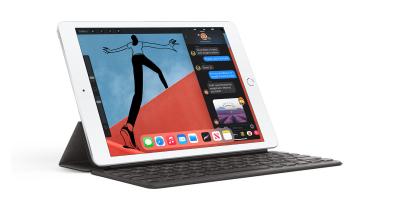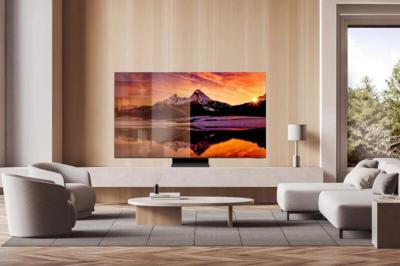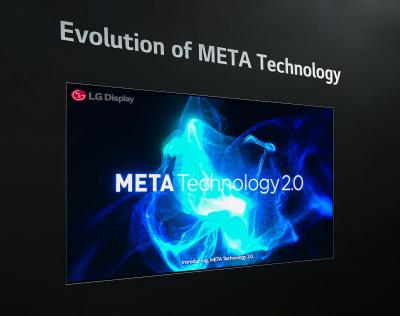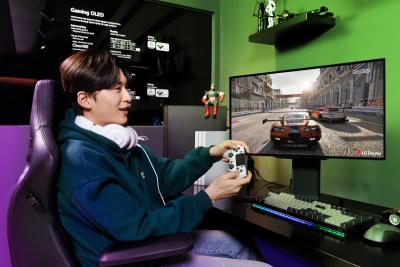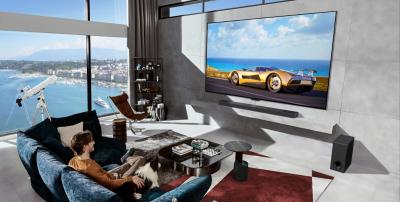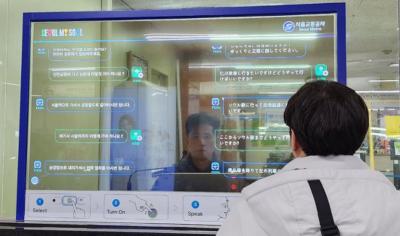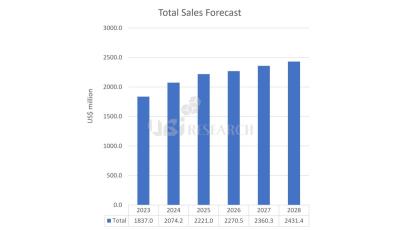OLED is an emerging display technology that uses thin films of organic materials to make efficient, thin and high quality displays. OLED panels can made flexible, rollable and transparent. Korea's LG is at the forefront of OLED development and production - as the world's leading OLED TV producer and a leading developer of flexible OLED for smartphones, wearables, automotive and more. LG's subsidiary LG Display is responsible for OLED R&D and panel production, while LG Electronics produces and markets OLED TVs.
LG OLED TVs
LG Display is the world's leading OLED TV panel producer, and LG Electronics is its largest customer - although LGD also supplies OLED panels to other companies including including Panasonic, Sony, Philips, Loewe, JVC, Hisense, Konka and others. OLED TVs are considered the world's best TVs, offering the best image quality. LG makes a wide range of OLED TV panels, ranging from 42-inch to 97-inch, including bendable solutions and even a rollable 65" TV.
While the basic OLED TV design uses RGB OLED sub-pixels to create each 'pixel' (what is referred to as direct emission OLED, the design used in mobile OLED displays used in Samsung's and Apple's smartphones, for example), LG Display opted for a different OLED TV design. The so-called WRGB (or WOLED-CF) architecture uses four white OLED subpixels with color filters on top (hence W+RBG). The WRGB technology (developed by Kodak and now owned by LG Display) is much easier to produce and scale-up, even though it has some technical disadvantages - and it is the technology that enabled LG to be the first company to actually produce commercial OLED TV panels.
LG Flexible OLEDs
LG currently produces flexible OLEDs (branded as pOLEDs), for both wearable devices and smartphones. LG is the leading supplier of AMOLED displays for Apple's Watch smartwatch and it also supplies OLED displays for smartphones. Click here for more information on LG's pOLED displays and its production capabilities.
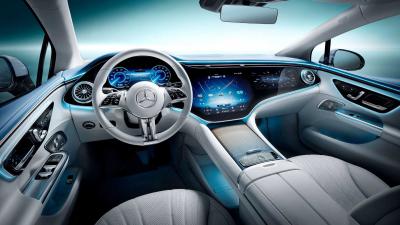
LG is also the world's leading automotive OLED producer, and is already supplying flexible OLEDs to Cadillac, Mercedes, and others.
LG Transparent OLEDs
LG has been working on transparent OLEDs for many years. In 2014 LGD unveiled a 18" transparent OLED prototype, and later in 2016 LGD demonstrated transparent 55" FHD AMOLED display prototypes. In 2019, the company started commercial production of 55" FHD transparent OLEDs, finding small markets in signage, commercial, mobility and more.
Further reading
The latest LG OLED news:
The 2024 Genesis GV70 to use a 27-inch OLED display produced by LG Display
Last year we reported that the next Hyundai Motor's Genesis GV80 car will adopt a 27-inch OLED display, produced by LGD. This display will be made from two separate OLED displays behind a single glass.
According to new reports from Korea, Genesis decided to equip the upcoming GV70 with the same display.
Samsung and LG begin producing 11" and 13" tandem LTPO AMOLED displays for Apple's iPads
Reports from Korea suggest that Samsung Display and LG Display are starting to produce AMOLED displays for Apple's future iPads, to be announced later this year. Samsung is set to produce 11" LTPO AMOLED displays, while LG Display is producing displays for the 13" model (but LGD will also produce 11" AMOLEDs in the future for Apple).
The Elec says that both Korean makers developer 11" and 13" displays, but for some unknown reason only LGD will produce the 13" displays. This could change in the future, of course. One reason could be that LG Display has more experience with tandem OLED architectures (developed originally by LGD years ago for automotive OLEDs).
Samsung unveils its 2024 OLED TV lineup
Samsung Electronics announced its 2024 OLED TV lineup, with 3 series. The company's flagship OLED TV for 2024, the S95D, offers 55-, 65-, or 77-inch 4K 144hz QD-OLED panels, offering high brightness (up to 3000 nits peak brightness), a new anti-glare coating to minimize reflections, Tizen 8.0 OS, and an external One Connect box for a sleek design. The S95D offers AI-Enhanced color accuracy - validated by Pantone.
Samsung also announced two more series - S90D and S85D. Interestingly, it did not detail whether these TVs use QD-OLED (produced by SDC) or WOLED panels (produced by LGD) - or a mix as it did last year within the same series.
LGD announces its 2nd-Gen MLA META technology, achieving 3000 nits peak brightness
LG Display announced that it has developed its 2nd generation Multi-Lens Array (MLA) technology, branded as META Technology 2.0. The company demonstrated a 83" META 2.0 OLED TV panel, during CES 2023. The company will apply this technology to several of its 2024 OLED TVs, ranging in size from 55-inch to 88".
META 2.0 WOLED panels achieve a peak brightness of 3,000 nits - a 42% improvement over the company's conventional panels. LGD explains that META 2.0 includes a pattern of optimized micrometer-scale lenses with an optimized lens angle, an upgraded "brightness enhancing algorithm" called META Multi Booster, and a full-range brightness detail enhancing algorithm called Detail Enhancer. All of these new technologies, combined, makes for a META 2.0 panel. In a 77-inch 4K panel, there are 42.4 billion micro lenses (!).
LG Display to start producing a 480Hz QHD OLED gaming monitor panel
LG Display announced that it has successfully developed a 27-inch 480Hz QHD (2560x1440) Gaming OLED display, a world first. The panel offers a 0.03 ms response time, that together with the ultra-fast refresh rate, makes it optimal for gaming. LGD's new panel also implements the company's Micro-Lens Array (MLA) technology to enhance light output.
LGD says that it will start producing this new panel in the first half of 2024. The company's 2024 gaming OLED monitor lineup will include panels in sizes 27, 31.5, 34, 39, and 45 inches.
LG Labs suggests putting a transparent OLED display in front of a vacuum tube audio device
LG Labs (Korea's experimental product marketing unit) announced a new design, called the LG DukeBox, which is an "innovative" audio product that combines vacuum tube audio with a transparent OLED display that covers it. The OLED can be used to mimic a glass box, or a fireplace, or to show actual content such as movies.
This is a weird, but maybe quite lovely, concept. LG is not likely to actually commercialize this, but it is always good to know that the company is looking for potential applications for its transparent OLED displays.
LG Electronics announces its 2024 OLED TV range
LG Electronics formally announced it latest OLED TV, its 2024 range. The company introduced several new features: 144Hz refresh rate on most of the models, a new image processor and Chromecast support. LG did not yet disclose the pricing or shipping dates for the 2024 OLED TVs.
The 2024 OLED TV range starts with the OLED B4 series (no 60Hz A series this year), that offers 48-, 55-, 65-, and 77-inch options, 120Hz 4K resolution, an Alpha 8 image processor, webOS 24 and built-in Chromecast. The OLED C4 improves over the B4 with 144Hz refresh rates an Alpha 9 Gen-7 image processor. The C4 is available in 42-, 48-, 55-, 65-, 77- and 83-inch options.
LG Display aims to expand the use of deuterated OLED compounds
In 2021, LG Display started to adopt deuterated OLED compounds in its WOLED panels, to improve the lifetime, efficiency and brightness. Today, all of LG's WOLED TV panels use deuterated blue OLED emitters, in which hydrogen is replaced by its more stable isotope, deuterium. The higher stability enables longer lifetime, which in turn enables higher brightness and efficiency.
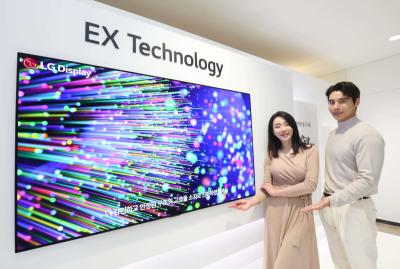
It is now reported in Korea that LG Display now aims to expand the adoption of deuterated OLED compounds to its red and green and yellow emitters, and also other layers in the OLED stack. If this report is true, it means that LGD will also use the technology in its mobile (p-OLED) panels, not just its OLED TV ones.
Seoul's subway tests a new translation service with transparent OLED displays
Seoul's Metropolitan Government has initiated a new pilot test at Myeong-dong Station that offers an AI-powered translation service for tourists that enables them to communicate with the subway staff through a transparent OLED display that shows relevant information during the conversation. The service supports 13 languages and aims to enable tourists to quickly and accurately receive information about the subway.
The transparent OLED display is a 55-inch OLED produced by LG Display. The pilot test will run for four months, currently at just one station. If the pilot is successful, it will be expanded to five stations in Seoul.
UBI Research: OLED material sales to reach $2.43 billion in 2028
UBI Research updated its forecast for the OLED material industry, saying that total sales of OLED materials will grow from $1.84 billion in 2023 to $2.43 billion in 2028, a growth of 5.8% CAGR.
UBI says that in 2028, SDC will purchase OLED emitters in $810 million, LGD in $550 million and BOE in $440 million.
Pagination
- Previous page
- Page 3
- Next page
